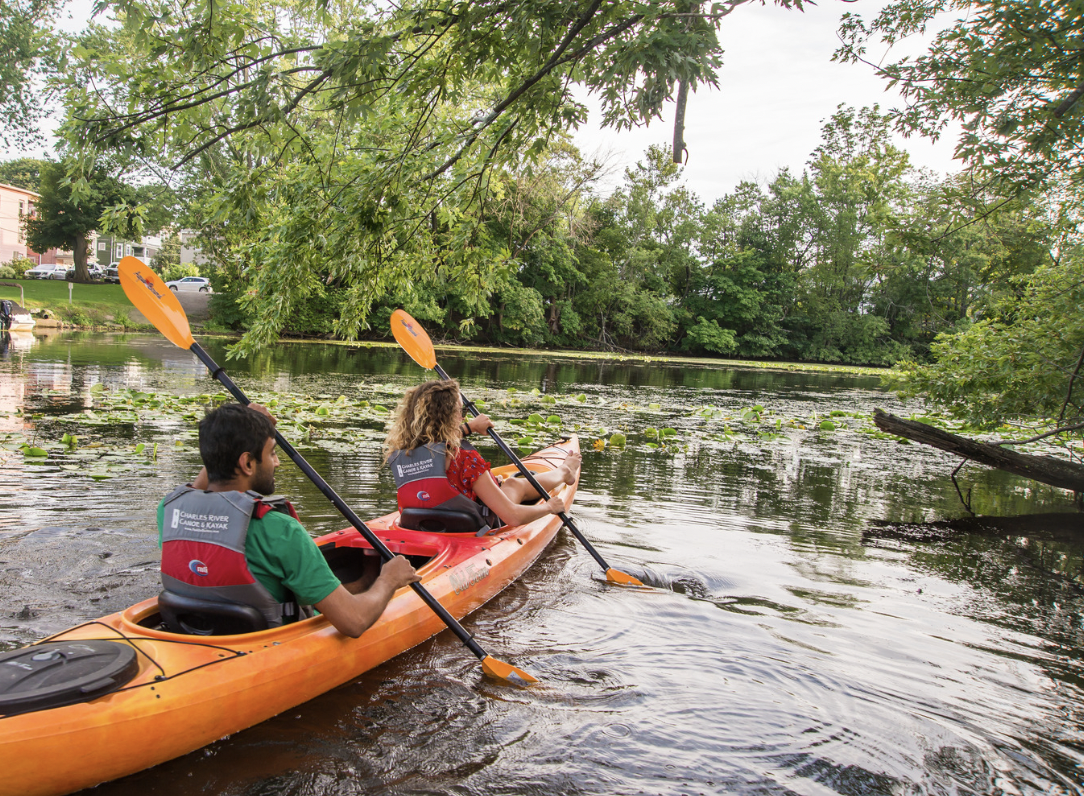EPA STEERING COMMITTEE
The Mystic River Watershed Initiative is a stakeholder-driven, collaborative effort with a mission to restore water quality and environmental conditions in the Mystic River watershed and to create and maintain open space and public access through safe public pathways and access points. The Initiative is guided by a steering committee composed of many local organizations including not-for-profit community groups, municipalities, and state and federal agencies.
The Mystic River Watershed Initiative’s Steering Committee achieves its mission by setting goals for restoring and maintaining water quality and public access; identifying priorities for the strategic direction and specific projects to help meet those goals; sharing data and other information to inform federal, state, and local environmental management decision-making; and coordinating water quality management efforts by governmental and non-governmental organizations.
Credit: Suzanne McDaniel
Credit: Jack Bitney
Credit: Margaret Walsh
The steering committee supports the efforts of federal, state, and local partners for all people regardless of race, color, national origin, or income to protect them from environmental and health hazards.
Through its work, the steering committee will collaborate with its membership to implement an interdisciplinary approach that educates the general public on environmental risks as well as increases participation and engagement of community members to meet its goals of mitigating the impacts of climate change and making the Mystic River watershed clean and accessible to all.
The following is a list of priority actions that support the goals of restoring and protecting water quality as well as identifying opportunities to create and maintain open space and public access. Members of the steering committee will work together to implement these actions and to increase public awareness, participation, understanding, and access to information about the Mystic River watershed
CLEAN WATER
Credit: David Mussina
Make the waters of the Mystic River watershed accessible to all communities for beneficial uses including cultural and spiritual practices and enjoyment for recreational purposes such as fishing, boating, and swimming.
Priority #1: Support water quality monitoring and research and share data and other information with environmental decision-makers, stakeholders, and the public.
Priority #2: Engage stakeholders and the public in “hands-on” opportunities to restore and protect water quality; ensure that opportunities for education and engagement activities include environmental justice communities.
Priority #3: Improve stormwater management to reduce pollutant loading and mitigate flooding
Priority #4: Reduce or eliminate discharges of sanitary sewage to surface waters in the watershed.
Priority #5: Increase knowledge of legacy sediment contamination, identify impacts on designated uses, educate the public, and identify priorities and opportunities for restoration, particularly in environmental justice communities.
Priority #6: Serve as a clearinghouse of information on how climate change may impact water quality and environmental justice populations in the watershed. Work with municipal and state partners to identify funding opportunities and address issues.
OPEN SPACE
Credit Chris McIntosh
Increase the establishment of safe open space and public access to the river and its tributaries (for example, the redevelopment and remediation of brownfields, development of walkways, bikeways, and trails) by supporting the development and/or improvement of open space and access at targeted sites in the watershed already identified; and continuing to investigate and search for possible open space and access targets in other parts of the watershed.
Priority #1: Increase public awareness and focus on selected sites in the lower watershed where there’s potential to enhance or increase open space.
Priority #2: Continue a systemic investigation of the river system to identify properties or projects that may provide for the development of public Open Space and Access.
STEERING COMMITTEE MEETING ARCHIVE
2025
January - Enhancing housing affordability and sustainability, and the impact of the Affordable Homes Act on the Mystic River Watershed
2024
September - Urban Tree Canopy Projects in the Mystic River Watershed
May - Updates on the Mystic Greenways Program in the Mystic River Watershed
Recording *Unfortunately our recording was cut off due to an internet issue and only a fraction of the meeting was recorded
2023
September - Habitat in the Mystic River Watershed
May - Green Infrastructure
January - Street Sweeping, Leaf Litter, and Phosphorus Control
2022
November - Environmental Justice
September - State Revolving Fund
May: Climate change/Rainfall and flooding resiliency; Mission & Priorities approval
January: 2022-2024 Mission and Priorities
2020
12/3/2020
9/10/2020
6/4/2020
2019
12/5/2019
9/12/2019
4/30/2019
2018
10/11/2018
6/14/2018
4/12/2018
2017
11/30/2017
9/14/2017
6/15/2017
4/13/2017
2017 sCIENCE SUB-COMMITTEE
Presentations:
Older Documents
2015 SCIENCE SUB-COMMITTEE
Presentations:
Alewife Brook and Mystic River MWRA Bacteria Monitoring Update
Dissolved Oxygen Levels in Alewife Brook and the Mystic River
2013 SCIENCE SUB-COMMITTEE
Agenda & Notes:
Presentations:
2011 SCIENCE SUB-COMMITTEE
Agenda & Notes:
Presentations:
2010 SCIENCE SUB-COMMITTEE
Agenda & Notes:
Presentations:
2009 SCIENCE SUB-COMMITTEE
Agenda & Notes:
Presentations:










